Haciendas in the Yucatan
Our Favorite Things
One of our favorite things to do with guests on a daytrip is to take a tour of some of the local haciendas. Two years ago we were brought in on an assignment for the local architecture school in Merida (FUAUDY) in conjunction with Cultura Banamex to photograph haciendas for a textbook. In the process, we visited, photographed, learned about and experienced first-hand over 30 haciendas in the Yucatan Peninsula. Several of our clients and friends have been involved in the restoration of haciendas as well. Through these experiences, we have acquired a fascination and affection for these dream-like architectural treasures.
Haciendas in the Modern World
When we first moved to the Yucatan, the word "hacienda" meant practically nothing to us. If forced, we might have defined it as the name of a rather nondescript town in Southern California, Hacienda Heights. We were introduced to haciendas and their aesthetic by Salvador Reyes Rios, the architect of our home and our neighbor. He and his wife Josefina had been helping to restore haciendas in the Yucatan for a few years when we met them, and they spent a few days showing us around some of the haciendas that they were working on.
Since that time, haciendas and specifically haciendas in the Yucatan, have gained more notoriety on the world stage. Starwood Hotels bought a number of renovated haciendas from Roberto Hernandez, the man who single-handedly started the hacienda revival in the Yucatan, and added them to their Starwood Luxury Collection. The Yucatan hacienda hotels are named San Jose, Uayamon, Temozon, Santa Rosa and Puerto Campeche. They are similarly remote, tranquil and luxurious. The one pictured here is San Jose Cholul, one of our two favorites(The other is Hacienda Santa Rosa).
While the Starwood haciendas are perhaps the most well-known, there are many haciendas in the Yucatan in various stages of decay or renovation, both public and private, remote and accessible. Of the more than 170 or so haciendas in the Yucatan, each has its own history, its own charm and its own ghosts.
Haciendas in Yucatan
Haciendas in Mexico were the basis of an economic system begun by the Spaniards in the 16th century, similar to the feudal system of Europe. They were farming and manufacturing centers that produced meat, produce, and other products for export. In Yucatan, they used the local Mayans to work the fields and factories at slave-like wages or no wages at all. Like the southern plantations of the United States, haciendas enforced a social system of castes, based on race, with the European hacendados (landowners) as the masters and the indigenios (Mayans) as the slaves.
Over time, haciendas became symbols of wealth and culture, adorned with architecture, furnishings and art from around the world. And some of them became symbols of oppression. Even today, you can find a few ruined haciendas that were abandoned and destroyed years ago . We have heard that these haciendas were run by especially destructive and injurious dueños(owners) and were the targets of revenge during the Yucatan Caste War, and later, the Revolution.
Most Yucatan haciendas in the 19th century produced rope from henequen, a variety of the agave cactus, which was produced as a result of investment by the John Deere Company, looking for a replacement for metal hay baling wire that was less dangerous to cattle. Henequen rope, called sisal, was also used for everything from rigging on ships to placemats and carpets that we use today.
Haciendas maintained huge fields of henequen, tended by hundreds of men. The main house, or casa principal was usually the largest building, where the hacendado kept his living quarters and where most of the administration occurred.
Henequen processing took place in the machine house, or casa de maquinas. There was usually a capilla, or chapel, a casa del majordomo, where the jefe (foreman) lived, and many other smaller buildings for storage and living quarters. The diesel motor pictured here is one of the more well-preserved and is in the Casa de Maquinas at Hacienda Yaxcopoil, another favorite.
After the Mexican Revolution and the subsequent invention of synthetic fibers, most haciendas were abandoned to decay in the jungle. In the last ten to twenty years, they have been "rediscovered" by both locals and foreigners and many have been renovated and given new lives.
Hacienda Hotels
Some haciendas have been renovated into hotels. The aforementioned Starwood hotels are part of a luxury chain of hotels, but there are other independently-owned hacienda hotels. Hacienda Chichen, Hacienda Santa Cruz, Hacienda Misne and Hacienda Nophat are hotels, each very different in their location and ambiance. Hacienda Chichen is the oldest hacienda in Yucatan, and has a fascinating history (detailed on its website). It also happens to be right next door to Chichen Itza, making it a convenient place to visit if you are also taking in that particular attraction.
Hacienda Petac (see a photo of the capilla below) and Hacienda Yunku are two that have been renovated by private parties and are rented with or without staff. Hacienda Yaxcopoil is a museum that has a great little guest house that can be rented for overnight stay. When we stayed there, a Mayan couple fixed our dinner and breakfast... delicious local food served right in our house. We thoroughly enjoyed staying there and being able to walk the streets of the little pueblo after dark, sharing in the life of the residents. That's not an experience that is easy to come by, but it is available if you stay overnight at Hacienda Yaxcopoil.
And perhaps our favorite hacienda, and one of the most remote, is Hacienda Tabi (shown above and to the left). We have fond memories of being the only guests at Hacienda Tabi on a moonlit night, lying out on that huge lawn, dividing our attention between a lunar eclipse above us and fireflies all around us. Pure magic! Unfortunately, we hear that Hacienda Tabi is no longer open to the public.
A few haciendas are now being run as vacation rental homes, giving you the chance to live in the entire hacienda as if it were your own. Probably the most lovely of these (that we know of...) is Hacienda Sac Chich, owned by some fellow Californians. Sac Chich is actually two haciendas in one, and you can rent one or both parts. The Casa Vieja (the older and original building of the hacienda) is actually just the Casa Maquina of the original hacienda, and some additional structures. It has been renovated in two stages by the architect Salvador Reyes Rios and his designer wife, Josefina Larrain. The Casa Vieja has five bedrooms, a charming and spacious kitchen, living room and an outdoor living area where we would spend all our time if we were staying there, complete with fireplace! The new house, also called Casa Sisal, is a totally modern structure built with white cement, wood and metal in the middle of what used to be a henequen drying field. The two-bedroom house is stunning... our favorite feature is the way the sliding glass doors open completely into wall pockets, creating an indoor/outdoor living space.
One of the easiest and closest haciendas to visit is Hacienda Misne, a hacienda that is within the boundaries of the Periferico of Merida and run by Hotel Indigo. Hacienda Misne is just this side of the Periferico on the way to Cancun (if you are heading there from the Centro of Merida), just about ten minutes from the heart of the city. Once you have left your car with the valets and walked inside the gates, you'd never know that the city is just outside. Hacienda Misne luxuriates amidst a tropical garden, with 42 rooms and 8 suites, all modern and spacious and facing both their own private gardens in the back, and a central garden at the front. A formal dining room, outdoor patio dining and a charming indoor/outdoor bar next to not one but two swimming pools make this a perfect hacienda for an event... wedding, conference, family reunion. We hear it is also a great place to take children for a day of swimming while you eat lunch and enjoy the surroundings. When we were there at the end of 2009, the food was good and the service was impeccable. Even the masseuse that came to the room was better than average.
Some haciendas around Merida have been preserved or renovated for uses other than hospitality. Hacienda Yaxcopoil, Hacienda Ake and Hacienda Sotuta de Peon are museums, providing a glimpse into former colonial times. Previously mentioned Hacienda Chichen, while also a hotel and spa, has a decidedly ecological and cultural charter. Over the last few years, the owners have created the Conservation of Maya Culture and Nature Reserve on the grounds. They have increased the farming site, organic vegetable growing fields and the banana production this year and have many plans along the same lines for the future.
Hacienda Teya is a restaurant and event location just outside of Merida. Hacienda Tahdzibichen is set up as a sala de fiestas (literally "party room") and hosts innumerable parties, weddings and quinceaños (coming out parties for 15-year old girls), as does the newly renovated Hacienda Tekit de Regil (pictured at the beginning of this article). Some haciendas are regularly used as sets for film, television and photo shoots, such as Yaxcopoil and Itzincab. Others, such as Chenche (whose elaborately-painted ceiling is shown above... check out the Chenche video in our video section) or Dzodzil are now strictly private homes or groups of homes, owned by both Mexican nationals and foreigners. Still other haciendas are unrestored and open to the ravages of time, like Yaxche de Peon, pictured below. To take photos of this hacienda, we had to dodge families of feral pigs sequestered in the ruins, as well as a number of less tame creatures.
The Hacienda Route
When we take visitors to spend a day exploring haciendas, we usually start out early, and drive south towards Uman. Following the signs to Muna on Highway 261, our first stop is usually Hacienda Yaxcopoil (YASH-coh-poh-EEL), which is Mayan for "the place of the green Alamo trees." You can recognize the hacienda by its beautiful arch, painted in a deep mostaza (mustard) color. Park outside and walk through the arch and up the front steps. At the small desk in front, you'll be asked for $35 pesos per person admission, used to cover the cost of maintaining the hacienda.
What we treasure about Hacienda Yaxcopoil is that it is a place where time stands still. Rather than renovating the buildings, the owner has simply arrested the decay. You can walk freely through the rooms in the casa principal. There you will see the large lounges and drawing rooms with high ceilings, walls with painted stencils, original mosaico floor tiles, and European furniture in every room. Walk into the back and see the Mayan museum, with its display of ancient pottery and archeological relics, all found on the grounds. There is an impressive casa de maquinas in the back of the property, with examples of the huge machinery used to process henequen. Hacienda Yaxcopoil is open from 8:00 AM to 6:00 PM daily, or from 9:00 AM to 1:00 PM on Sundays and it is really one of those "don't miss" stops if you are visiting the Yucatan. We never seem to tire of it.
After touring Yaxcopoil, we usually drive to Hacienda Temozon for breakfast. There is a shady place to park to the left of the entrance, but check in with the man at the gate first to see if the restaurant is accepting guests. Sometimes there will be a wedding or private party, and the hacienda will be closed to outsiders. Leaving your car, don't miss the smell of the sweet air and the sounds of birds at this most palatial of the restored haciendas. The entrance leads up stairways, past the dolphin-head waterspouts, to a wonderfully grand terrace. You can dine on the terrace facing the stairway or on the terrace at the back of the casa principal, overlooking the pool. (The photo below is taken from the far side of the pool, looking back to the Casa Principal where you can eat breakfast.)
A few years ago, we discovered that breakfast at the ultra-luxurious Hacienda Temozon is priced reasonably and it has become a favorite stopping place. The service is lovely, with tables set in linen and a view of the expansive grounds, the inviting and elegant pool and the casa de maquinas in the distance. We love to sit under the lazily turning ceiling fans on a tropical morning, listening to the birds and dining on fresh papaya, fresh-squeezed orange or grapefruit juice, fresh-baked wholegrain bread (a real treat around here), huevos Motuleños (a Yucatan specialty dish that consists of a bed of refried beans, topped with a fried tortilla, two fried eggs and then smothered with a tomato sauce, another friend tortilla, a slice of or diced ham, cheese and peas, of all things. Sounds weird, tastes great!) and a capuccino. Fortified with a breakfast like that, we're ready to continue exploring (or we're ready for a siesta... ).
On your way back to your car, note the sign to the helicopter pad. This hacienda was chosen for a summit meeting between President Bill Clinton and Presidente Dr. Ernesto Zedillo of Mexico in 1999. Thus, the need for a helicopter pad. We hear it is still used on occasion for privacy-seeking actors, rock stars and politicians.
After Temozon, we like to go north to a little-known hacienda called Uayelceh, which literally means Place of the Haunted Deer and is pronounced "why-el-kay". This is an abandoned and unrestored hacienda. There is a caretaker living there, and the fields are used by the town for soccer, which is a common practice. The hacienda itself is uniquely beautiful, with an elegant clock tower on the Casa de Maquinas. If you're lucky, the capilla will be open and it too is quite stunning. Other haciendas that are abandonado (abandoned) such as Chunchucmil or Mucuyche are also lovely in their decay.
If you do decide to explore an abandoned hacienda, be aware of a few things. Some, like Uayalceh and Chunchucmil, are in the center of town and the grounds, at least, are open to passers by. Others, like Mucuyche, are closed off and strangers are not welcome. You can still enjoy the buildings from outside the grounds, but do not enter hacienda grounds that are obviously closed to the public. There are more than angry caretakers to beware of: beehives, wasps nests, and other creatures can be found in abandoned buildings, as well as open pozos (wells) and cenotes (sink holes).
After Temozon and Uayalceh, we usually return to Highway 261 and continue south. We might quickly stop at Hacienda Ochil (oh-CHEEL), or we might do it on the way back. We like Ochil for the mini-museum about haciendas that takes about three minutes to enjoy, as well as for the lovely little cafe that serves authentic Yucatecan food. Great panuchos here, among other things. Or you can just order a refreshing glass of horchata (rice milk) or tamarindo (a cold drink with the flavor of tamarind). There's a great little gift shop that has our favorite kind of hammocks (undied cotton string hammocks) and a few other well-crafted things. There are Cultura Banamex-sponsored shops on the grounds of Ochil, which are sometimes open and sometimes not. If they are, you can pick up some nice handmade stone boxes candleholders or henequen placemats or tiny elaborate picture frames carved from the horns of local bulls. Ochil is a friendly, intimate hacienda and it has an extra added attraction. If you walk down behind the building that houses the bathrooms, you can visit a cenote at the bottom of a hillside amphitheatre. We are told it is being prepared as a venue for concerts and we can't wait to attend one there.
After Ochil, well, quien sabe (who knows) where we might go next? We may visit Hacienda Santa Rosa (quite a ways down the road) and on to Chunchucmil, which is out at the end of the road to Santa Rosa. Santa Rosa is a restored hacienda hotel that is one of the prettiest we've ever seen. We have never spent the night there, but we would like to. Chunchucmil is an uninhabited hacienda that is still quite well preserved. The townspeople use the capilla for their local church and archaeologists have explored a lot of the surrounding countryside and found things worth looking for, or so we hear. The hacienda buildings surround a very large field which is used by the town as a soccer field or a baseball field, depending on the season. Based on the size and elegance of the hacienda, Chunchucmil must have been quite something in its day. We like it there because somehow, we always get good photos like the one of this young man, his hands covered with the chalk after laying out the lines of a baseball diamond for a game later that day with a neighboring town.
Haciendas Close to Merida
If you are in Merida but don't have time for a day of meandering through the countryside, Hacienda Teya is only a few minutes outside of town. You can have a wonderful lunch at the restaurant there, enjoying some of the best regional cuisine available, and see a real hacienda with a stunning ballroom that is still used for parties and events. Hacienda Misne (mentioned above) is even closer than Hacienda Teya, and a great place to go for a lovely lunch or dinner. Hacienda Yaxcopoil is about twenty minutes outside of town and doable in half a day. Hacienda Xcanatun is only fifteen minutes to the north of town and is one of our favorites for dinner. (To the right is a photo of the bar in the renovated casa de maquinas) It has probably one of the best two or three restaurants in all of Merida, as well as luxurious hotel rooms and a full service spa.
There are other haciendas close to town that we've visited, but we can't remember their names, and many more we've not yet seen. We know there are a finite number of them, but the list seems rather endless. An endless list of architectural and cultural treasures: just one more thing we love about living in Yucatan!
-----------------
Interested in staying at any of these haciendas? Here are some links to reviews or websites of local haciendas:
Hacienda Misne - Hacienda closest to Merida Centro
Hacienda Chichen - Oldest hacienda in the Yucatan, next door to Chichen Itza.
Hacienda Petac - Exquisitely renovated. Entire hacienda for rent by the week. 30 minutes outside Merida.
Hacienda Xcanatun - 10 minutes north of Merida. Luxury hotel, spa and gourmet restaurant.
Hacienda Sac Chich - A beautiful hacienda vacation rental. Rent the main house (Casa de Maquinas) or the new modern Casa Sisal. About 40 minutes south of the Merida airport.
Hacienda Santa Cruz - A small luxury hotel. 20 minutes outside Merida.
Hacienda Yaxcopoil - 30 minutes south of Merida. Museum and guest house.
Hacienda Temozon - 35 minutes outside of Merida. Great place for breakfast, but not always open to the public.
Hacienda Santa Rosa - Most romantic hacienda, an hour south of Merida.
Hacienda San Jose - OK, maybe this is the most romantic hacienda! We can't decide. Hacienda San Jose has a special package for local expats (ask about it and say Yucatan Living sent you!) and it is just 35 minutes east of Merida... but a world away!
Hacienda Uayamon - Hidden treasure hacienda of Campeche. Very cool pool.
Hacienda Puerta Campeche - Newest link in the Starwood hacienda chain. In Campeche.
Read more about the history of henequen in the Yucatan here







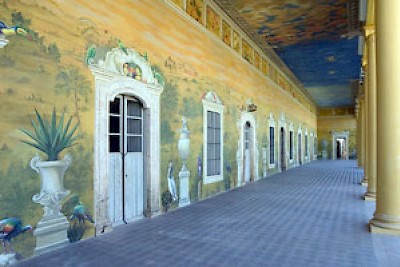
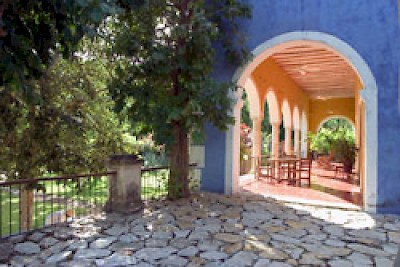

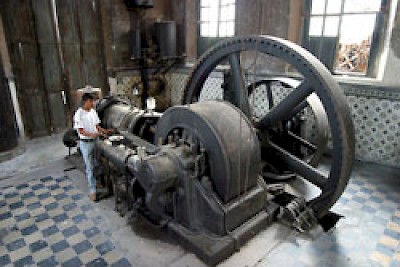
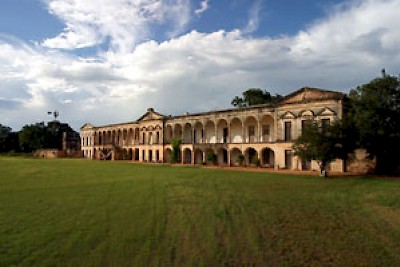
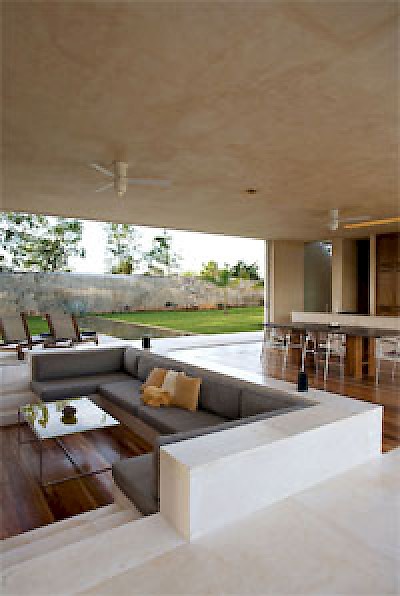
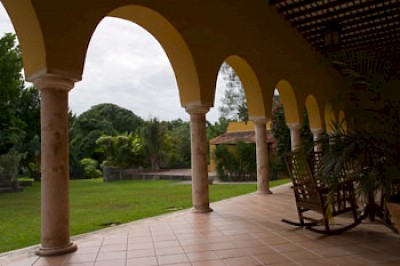

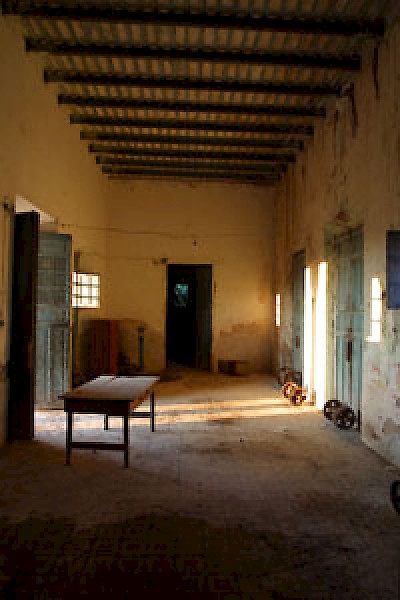
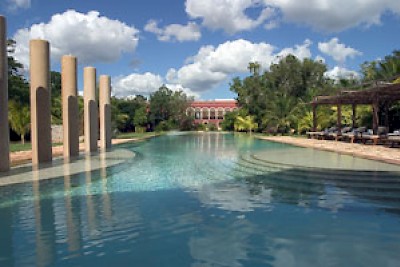
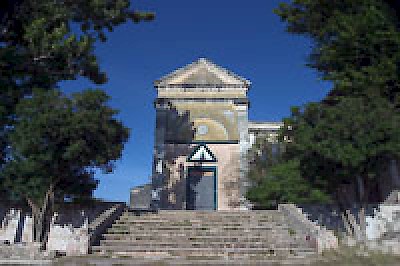


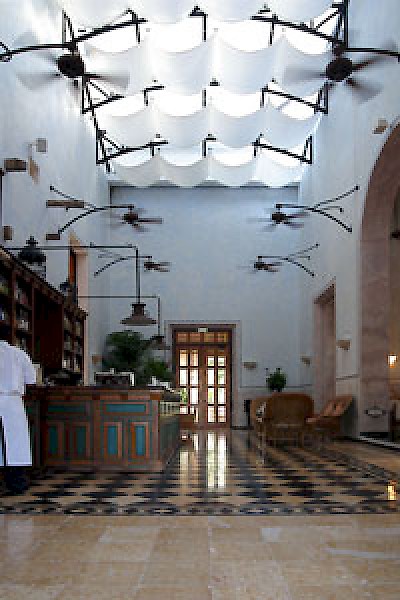

Comments
Working Gringos 18 years ago
Other lovely places to stay include Casa Santana (www.casasantana.com), Hotel Marionetas (www.hotelmarionetas.com) and Luz En Yucatan (www.luzenyucatan.com). Each one is different but all are wonderful!
Reply
starr sariego 18 years ago
We are looking for a small, interesting b&b for 8 day stay in June/07. We love more authentic and arty. We thought the haciendas but prices really seem too high for us. Saw a place called Casa Pocito in Merida (vaction rental, 2 bdrm) and that is perfect. Any suggestions along those lines in case I do not hear back from them? Your web site is great and really helping me plan our trip.
Starr in Miami, FL
Reply
Genny M./Peregrina. 18 years ago
Again and again, the more I read the better I feel about my hometown seen thru your eyes, it is amazing, I have always been facinated with the Haciendas (since my youth) and it is much nicer now that Cordemex and private owners are
restaurando most of them, I had that idea of wanting to buy one and restoring it and my family thought I was nuts, see now? Anyway thanks for all the information, keep up the good job.
Reply
Gringo Gone Home 18 years ago
[...] There was none of that this time. Bush and Calderon visited Uxmal, but no one was allowed near them. The two presidents and their wives had dinner at Hacienda Xcanatun and the wives visited Hacienda Ochil (hmmm, they must have read our article about haciendas…) But no one here saw the President of the United States unless they were invited to a private audience. [...]
Reply
sean 18 years ago
Is there a taxi service that is available from Merida airport to Hacienda San Jose? Or, has one to depend on the Hacienda management to arrange transportaion to and from the airport. It's rather expensive.
Reply
Working Gringos 18 years ago
As far as we know, the ownership of Hacienda Xcanatun has not changed. It is still owned by an American woman and her Mexican filmmaker husband.
As locals, we have never actually stayed at the hacienda. After reading the most recent two pages of TripAdvisor comments, we can only think that the people with complaints might be a bit pickier than most or were there on a bad day. Paint peels, bugs die and dust settles at a more rapid rate in the Yucatan. While it is the job of the people who work at a whatever-star hotel to care about these things, we’re sure there are days when they just can’t do it all.
From our experience, dining at Hacienda Xcanatun is always a lovely treat and the food is consistently good. Are the rooms worth the price? That is a matter of taste and finances.
We did notice a few people complaining about the location. If you want to spend a lot of time enjoying the ambiance of the centro historico, Hacienda Xcanatun is not the place to stay. It does take 20-30 minutes to drive from there to downtown Merida. Unless you are going on your honeymoon, you probably wouldn’t want to stay there for more than a day or two without a car.
We find the little town surrounding the hacienda rather charming. But the difference between the financial level of the guests at the hacienda and the people living just outside the gates can be disturbing to someone with political sensitivity, or just annoying to someone who doesn’t want to think about it.
If it gives you any clue, we will probably suggest that Working Gringa’s mother stay there in March when she visits. And we doubt she will find the village charming or neglect to mention the dead bugs in the jacuzzi.
Reply
Jane 18 years ago
Wonderful article; thanks so much.
By the way, I am reading more complaints about Hacienda Xcanatun on tripadvisor. Do you know if the management or owner has changed?
Thank you.
Reply
Yucatan Hacienda Architecture Book 18 years ago
[...] For more about haciendas, be sure to read Yucatan Living’s article on haciendas. [...]
Reply
The Yucatan Primer 18 years ago
[...] Hacienda Ake has a working henequen processing plant, called a casa de maquina, that they fire up every so often to produce twine. You can see the whole operation from start to finish, but don’t expect a Disney-style tour. It’s a sleepy town and you get to poke around the hacienda and the machinery. [...]
Reply
Duane Kleppe 19 years ago
Hacienda Tabi is a "must see". I hope it is restored some more, but not so much that it looses it's charm. The article in Achaeology magazine was great. I would love to read more about it's past in another edition.
Reply
Working Gringos 19 years ago
Ellyne,
Whoops - major oversight on our part.
Hacienda Kantanchel is one of the more beautifully appointed in Yucatan. It was expertly renovated and open to the public as a hotel and restaurant until hurricane Isidore caused major damage in 2002. We ate dinner there before the hurricane closed its doors and can say it was one of the best restaurants around at the time.
The owners did restore the hacienda but it is only available now to private parties who rent several rooms or the entire hacienda. You can learn more about Hacienda Kantanchel by visiting their website at:
http://www.haciendakatanchel.com/en/home.html
Reply
« Back (50 to 61 comments)Next »